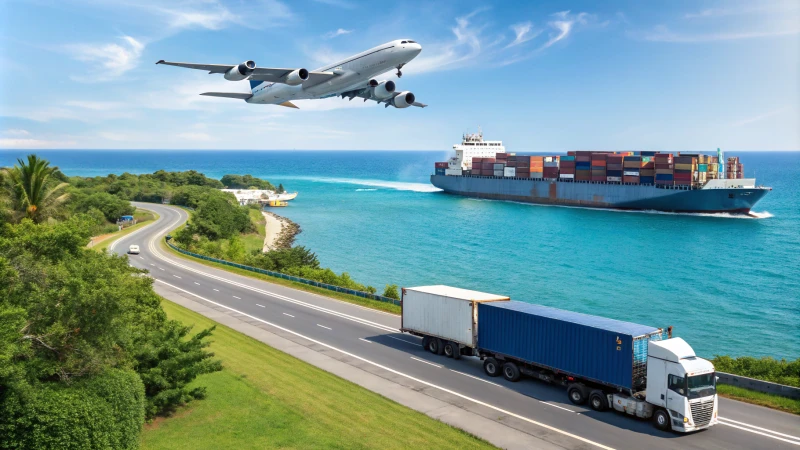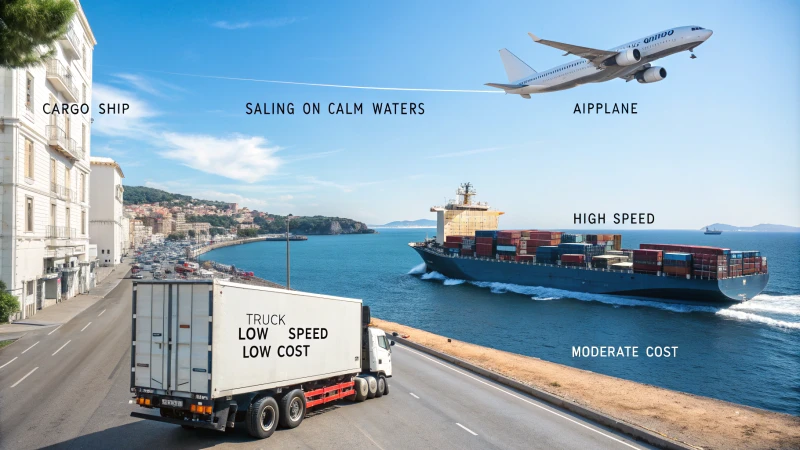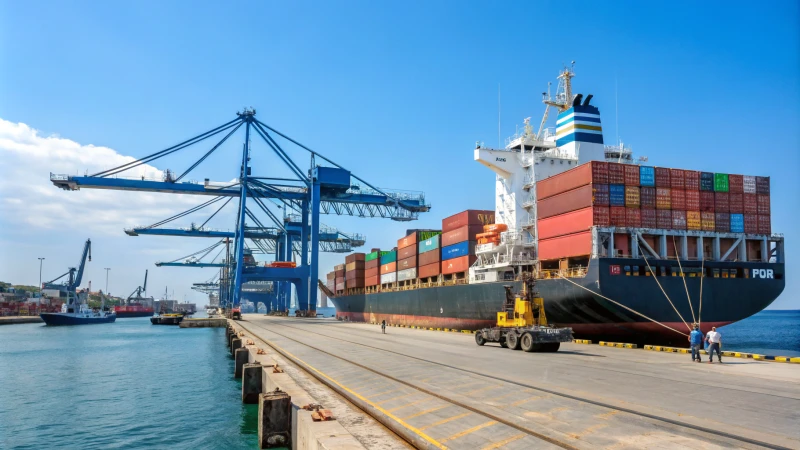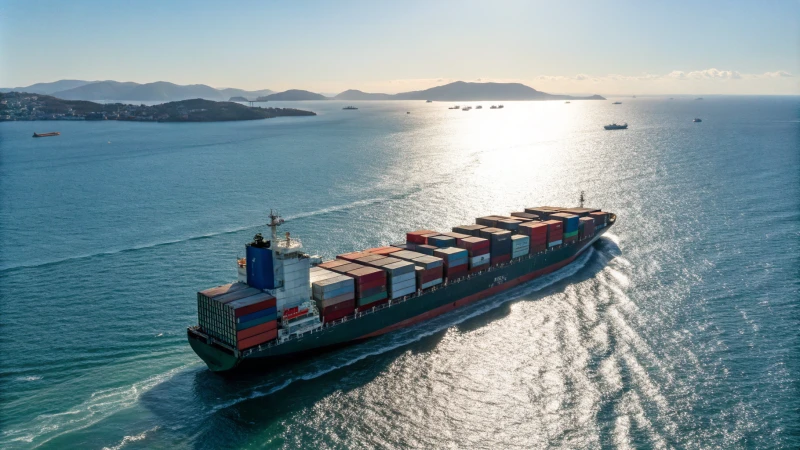Are you thinking about bringing goods from China to Australia? I want to share my experience with the challenges of shipping. Shipping involves more than numbers. Timing and trust play a big role. Timing is really important. Trust is also very important.
Shipping time from China to Australia depends a lot on the method. Sea freight usually takes between 20 and 40 days. Air freight generally arrives in about 5 to 7 days. Express delivery options typically reach in 4 to 7 days. Sometimes, during busy periods, express delivery might take longer. Busy times might cause delays.
When I first started importing, I felt puzzled by the different timelines. Sea freight often takes 20 to 40 days. The duration depends on the route and specific ports. I remember waiting impatiently for a shipment that seemed to take forever to arrive! Air freight is faster, usually finishing in about 5 to 7 days. This speed is great for urgent, valuable items. Express shipping delivers in just 4 to 7 days if you are really rushed. During busy seasons, even express shipping might take a bit longer. These timelines are vital for my business. I really wish I had known this earlier.
Sea freight from China to Australia takes 20-40 days.True
Sea freight is the most common method for shipping goods, typically taking 20-40 days depending on various factors.
Air freight from China to Australia takes 5-7 days.True
Air freight is a faster option for shipping, usually completed in about 5-7 days.
What Are the Different Shipping Methods Available?
Shipping sometimes feels overwhelming, especially for beginners. Options are here and they change everything. Different people find that understanding each method helps a lot. Explore the various shipping methods to find what suits you best. Unique needs are important and everyone has them.
Shipping methods appear in various forms. Options include sea freight, air freight and express services. Each option has unique pros and cons related to cost, speed and reliability. Selection depends on your particular requirements and priorities. Sometimes budget is the focus. Other times speed matters most.

When I began my journey in logistics, I did not know how many ways existed for shipping. It felt like a never-ending puzzle. With some help, I discovered my path. Let us explore these methods together. You will feel more sure about shipping options.
Sea Freight
Sea freight is often the most economical option for shipping large quantities of goods.
For instance, a 20ft container can take approximately 20-35 days to reach its destination, depending on the route and ports involved. In contrast, a 40ft container may require around 25-40 days. This method is ideal for bulk shipments, especially for businesses looking to reduce costs over speed.
| Container Size | Estimated Time | Cost Efficiency |
|---|---|---|
| 20ft | 20-35 days | High |
| 40ft | 25-40 days | Higher |
To learn more about sea freight options, check out this guide1.
Air Freight
When time is of the essence, air freight emerges as a fast alternative. It usually takes about 5-7 days, making it suitable for smaller or high-value items that need quick delivery. However, this method tends to be more expensive than sea freight.
Benefits of Air Freight:
- Speed: Ideal for urgent shipments.
- Security: Higher security standards during transit.
- Tracking: Real-time tracking capabilities.
For a comprehensive overview of air freight benefits, visit this resource2.
Express Shipping
Express shipping services provided by companies like DHL, UPS, and FedEx typically deliver within 4-7 days. However, during peak seasons, this can extend to an additional 3-10 days. This method is particularly beneficial for urgent documents or small parcels.
| Carrier | Standard Time | Peak Season Delay |
|---|---|---|
| DHL | 4-7 days | +3-10 days |
| UPS | 4-7 days | +3-10 days |
| FedEx | 4-7 days | +3-10 days |
Explore more about express shipping options through this link3.
Choosing the Right Method
Selecting the appropriate shipping method depends on various factors such as cost, delivery speed, and the nature of the goods. It's essential to evaluate your priorities—whether you value speed over cost or vice versa—to make an informed decision.
For more insights on optimizing your shipping choices, refer to this detailed analysis4.
Sea freight is the cheapest option for shipping large quantities.True
Sea freight is often the most economical method for bulk shipments, especially for businesses aiming to minimize costs.
Air freight takes longer than sea freight for deliveries.False
Air freight typically delivers within 5-7 days, making it faster than sea freight's 20-40 days delivery time.
How Do Shipping Costs Compare Between Methods?
Shipping costs often seem confusing. Understanding these differences worries many people. I felt this confusion before. Today, let's explore these details. We will understand them together!
Shipping costs vary greatly depending on the method. Sea freight offers a very cost-effective option for large shipments, but it's slow. Air freight provides a faster service, though at a higher price. Express shipping delivers speed but comes at a hefty cost. Important factors that affect costs are package size, weight, distance and even seasonal demand. These factors significantly impact the price.

Handling Shipping Costs
Handling shipping costs sometimes feels very confusing, but I have learned some things that might help. Knowing different shipping options is important for both experienced business owners and newcomers to save money and time.
Comparing Sea Freight Costs
Sea freight is often seen as the most economical option for bulk shipments, especially for large items. The cost varies based on container size:
| Container Size | Estimated Shipping Time | Average Cost Range |
|---|---|---|
| 20ft | 20-35 days | $1,500 - $3,000 |
| 40ft | 25-40 days | $2,500 - $4,500 |
The price may also fluctuate based on the shipping route and seasonal demand. For businesses like Joson’s in the electronics sector, sea freight offers a significant cost advantage for larger shipments but comes at the expense of longer transit times.
I helped a friend with an electronics business who saved a lot with sea freight, though it took longer. The choice between saving money and saving time matters a lot!
Explore more about sea freight pricing5.
Analyzing Air Freight Costs
Air freight is generally the fastest method, ideal for smaller or high-value items. Here are key points to consider:
- Transit Time: Typically 5-7 days.
- Cost: Significantly higher than sea freight, usually between $5 - $12 per kilogram.
I chose air freight for valuable electronics needing fast delivery. It's costly, but seeing happy customers is priceless. People love getting their orders quickly.
Learn about air freight benefits6.
Understanding Express Shipping Costs
Express shipping acts like a delivery superhero! Companies such as DHL, UPS and FedEx deliver packages fast:
| Carrier | Estimated Time | Cost Range (for 1kg) |
|---|---|---|
| UPS | 3-5 days | $30 - $60 |
| FedEx | 2-4 days | $35 - $70 |
| DHL | 4-7 days | $40 - $80 |
Express shipping offers great convenience, but planning is key - the prices rise during busy times. Balancing speed and expenses keeps my business running well.
Check out more on express shipping rates7.
Factors Influencing Shipping Costs
When thinking about shipping prices, remember these key points:
- Package Size and Weight: Bigger or heavier parcels cost more.
- Distance: Longer routes mean paying extra.
- Delivery Speed: Faster methods have higher costs.
- Seasonal Demand: Costs go up during busy times like holidays.
Keeping these points in mind helps in choosing better shipping options and staying within budget while satisfying customers.
For detailed insights on factors affecting shipping costs8.
Sea freight is the cheapest option for bulk shipments.True
Sea freight typically offers lower costs for large shipments compared to air and express methods, making it economical for bulk transport.
Air freight is faster but more expensive than sea freight.True
Air freight delivers items quickly within 5-7 days but at a significantly higher cost compared to sea freight options.
What Factors Affect Shipping Times from China to Australia?
Ever waited nervously for a package from China, wondering about its arrival at your home? Knowing what influences delivery times helps reduce that worry. Let's explore this!
**Shipping times from China to Australia depend on many things like transportation methods, shipment size, seasons, customs and where you are sending the goods. Each of these parts is very important for planning delivery times well. Good planning helps avoid surprises in the process.
Transportation Method
Choosing the transportation method is very important. This decision really matters꞉
One time, I picked sea freight for a large electronics shipment; it was cheaper, but I waited forever for those boxes to show up! But another time, I picked air freight for urgent gadgets. It cost more, but I felt better knowing they would arrive fast. Peace of mind is important.
Shipment Size
Shipment size matters too. I found out that big shipments take more time to load and unload, especially at busy ports. For example꞉
20ft container꞉ Takes around 20-35 days
40ft container꞉ Takes around 25-40 days
I learned that planning shipment size well can make delivery faster and help manage costs. Check out this guide to optimize shipment size.
Seasonal Variations
Oh and seasons really matter! In busy seasons like around Christmas, delays are common because shipping routes are very crowded. Expect 3-10 extra days during these times. I always look at shipping calendars to plan before busy seasons. Planning helps.
Customs Procedures
Customs can be tricky. Once, a shipment was delayed because of missing paperwork. It was not a good experience! Correct and complete documents keep this part easy. Find detailed customs information at this resource.
Destination Specifics
Think about where your goods go in Australia. Remote areas might take more time to reach because of fewer transport options. Regional logistics can really affect delivery times. Knowing this was a real eye-opener for me.
Paying attention to these factors helps manage expectations and improve shipping strategies from China to Australia. Wishing you smoother sails - or flights - for your future shipments!**

Main Content
When I began importing and exporting, the challenges of logistics overwhelmed me. My first big order from China came with both excitement and worry. I felt anxious about the delivery time to Australia. That experience taught me that many important factors affect shipping times. Knowing these factors helps plan better and manage what to expect.
Transportation Method
The choice of transportation significantly impacts shipping times. Below is a comparison of different methods:
| Method | Typical Shipping Time | Ideal Use Case |
|---|---|---|
| Sea Freight | 20-40 days | Large volumes or heavy items |
| Air Freight | 5-7 days | Smaller or high-value items |
| Express Shipping | 4-7 days | Urgent deliveries |
Sea freight is often more economical for large shipments but can be time-consuming. Conversely, air freight is faster but comes at a higher cost. For urgent needs, express services like DHL9 or UPS10 can be utilized, although they are more expensive.
Shipment Size
The size of your shipment also affects delivery times. Larger shipments may require more time for loading and unloading, especially at busy ports. It's essential to consider the following:
- 20ft container: Around 20-35 days
- 40ft container: Around 25-40 days
Managing shipment size efficiently can lead to better planning and cost optimization. For more on optimizing shipment size, check out this guide11.
Seasonal Variations
Shipping times can vary depending on the time of year. During peak seasons, such as holidays or major sales events, shipping might take longer due to increased demand and congestion in shipping lanes. The peak season can add an additional 3-10 days to typical shipping times.
To stay informed on the best times to ship, consider exploring shipping calendars12.
Customs Procedures
Another crucial factor is customs clearance. Delays can occur if there are discrepancies in documentation or if additional inspections are required. Ensuring that all paperwork is accurate and complete can help streamline this process.
For details on customs regulations, refer to this resource13.
Destination Specifics
Finally, the final destination within Australia can influence shipping times. Remote areas might experience longer delivery periods due to fewer transport options available. It’s beneficial to understand regional logistics when planning shipments.
By analyzing these factors, you can better manage your expectations and improve your shipping strategy from China to Australia.
Sea freight typically takes 20-40 days for delivery.True
Sea freight is slower, taking 20-40 days, making it suitable for large shipments.
Express shipping is the fastest method for deliveries.True
Express shipping can deliver goods in just 4-7 days, ideal for urgent needs.
How Can I Track My Shipment Effectively?
Tracking your shipment should not feel like guessing. The right tools turn it into a clear and simple task. You stay informed. You feel at ease. I want to share how I learned this.
**To follow your package easily, use the tracking number on the carrier's website or app, set alerts for updates and maybe try other services for tracking with different carriers. You won’t need to worry because you'll know what's happening!
Understanding Your Tracking Number
The first time I sent something important, waiting felt endless! But when I got my tracking number, everything changed. This number lets you see each step of your package’s journey. Carriers format these numbers differently. Here’s a quick guide to make it easier.
Online Tracking Tools
I often depend on carrier online tools for tracking. These tools give real-time updates on your package. Here are some I like to use꞉
These services often offer notifications by email or SMS. You can relax since they'll alert you about any status changes.
Mobile Apps for Shipment Tracking
In our digital world, mobile apps truly help with tracking packages! Most big carriers have apps that let me check my deliveries anywhere. Features I really like are꞉
- Notifications for updates
- Options to schedule deliveries
- Support from customer service
I often use the FedEx Mobile App or the UPS Mobile App to keep packages organized and worry-free.
Using Third-party Tracking Services
If you often use many carriers, third-party services are really useful. They bring tracking info from different places into one easy spot. Popular choices include꞉
These tools not only save you time but also give full updates on your packages, no matter who delivers them.
Best Practices for Effective Shipment Tracking
Over time, I've learned some great tips that made tracking easier꞉
Save your tracking number
Keep it until your package arrives.
Check the status regularly
Don’t wait for the delivery date.
Set notifications
Get alerts for changes in status.
Reach customer service if needed
If delays happen, asking them can clear up confusion.
By doing these things and using the tools, I’ve tracked my packages better and managed what to expect regarding delivery and any problems. Remember, each delivery tells a story - enjoy that adventure!**

Understanding Your Tracking Number
Begin tracking your shipment with the carrier's tracking number. Find this number on their website or app. This unique identifier allows you to monitor your shipment’s progress. It's essential to understand how to read the tracking information. Different carriers have varying formats for their tracking numbers, and it's beneficial to know what each part signifies.
For example, here’s a quick overview of tracking formats:
| Carrier | Tracking Number Format | Examples |
|---|---|---|
| FedEx | 12 digits or 15-20 characters | 1234 5678 9012 |
| UPS | 1Z followed by 16 digits | 1Z12345E0205271688 |
| DHL | 10 digits or 11 characters | 1234567890 |
| USPS | 20-22 digits | 9400 1000 0000 0000 0000 00 |
Online Tracking Tools
Setting up notifications for updates really helps reduce stress. Many carriers offer online tools for tracking shipments. Using these tools can provide real-time updates about your shipment's status. Here are some popular options:
These services usually allow you to sign up for notifications via email or SMS, ensuring you stay informed about any changes in your shipment's status.
Mobile Apps for Shipment Tracking
Managing multiple shipments might get confusing. In today’s digital age, mobile apps have become invaluable tools for tracking shipments. Most major carriers have dedicated apps that enable users to track their packages on-the-go. These apps often feature:
- Push notifications for updates
- Delivery scheduling options
- Customer service support
For example, you can download the FedEx Mobile App or the UPS Mobile App to manage your shipments effectively.
Using Third-party Tracking Services
Third-party services help organize everything across various carriers. If you frequently use multiple carriers, consider using third-party tracking services. These platforms consolidate tracking information from various carriers into one interface. Some popular third-party options include:
These tools can save you time and provide comprehensive updates on your shipments, regardless of which carrier is handling them.
Best Practices for Effective Shipment Tracking
To make the most out of your tracking experience, consider these best practices:
- Save your tracking number: Keep it handy until your package arrives.
- Regularly check the status: Don’t wait until the expected delivery date.
- Set up notifications: Get alerts for any changes in status.
- Contact customer service if needed: If there are unexpected delays, reaching out can provide clarity.
By following these guidelines and utilizing the available tools, you can track your shipment effectively and manage your expectations regarding delivery times and potential issues during transit.
Tracking numbers are unique identifiers for each shipment.True
Each shipment comes with a unique tracking number, allowing you to monitor its progress easily through the carrier's system.
Third-party tracking services can consolidate multiple carriers' info.True
Using third-party tracking services helps users manage shipments from various carriers in one place, enhancing efficiency and visibility.
Conclusion
Shipping times from China to Australia vary based on method: sea freight (20-40 days), air freight (5-7 days), and express shipping (4-7 days). Seasonal factors may delay deliveries.
-
Understanding different shipping methods can help optimize logistics for your business or personal needs. ↩
-
Learn more about the specifics of air freight and how it can benefit your shipping needs. ↩
-
Explore express shipping options and find out which service is best suited for your urgent deliveries. ↩
-
Discover tips for choosing the right shipping method based on your priorities and needs. ↩
-
This link provides a comprehensive overview of sea freight pricing strategies that can help you save costs on your shipments. ↩
-
This resource dives into air freight options and their advantages for time-sensitive shipments. ↩
-
Discover the latest express shipping rates and how they compare among major carriers. ↩
-
This article covers all the critical factors affecting shipping costs to help you choose the best method. ↩
-
Discover expert insights into shipping factors to optimize your logistics strategy effectively. ↩
-
Understand destination logistics within Australia for efficient planning. ↩
-
Find comprehensive resources on customs procedures that can influence your shipping timelines. ↩
-
Learn about seasonal impacts on shipping schedules to avoid delays during peak periods. ↩
-
Explore strategies for optimizing shipment sizes for faster delivery times. ↩
-
This link leads to a comprehensive guide on using tracking numbers efficiently, enhancing your shipment management skills. ↩
-
Explore this resource for top-rated mobile apps that can help streamline your shipment tracking process. ↩
-
This article provides insights into third-party tracking services that aggregate information from multiple carriers. ↩
-
Find out more about best practices for tracking shipments effectively to ensure peace of mind during transit. ↩




